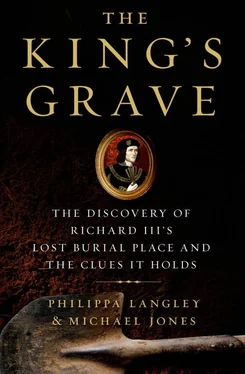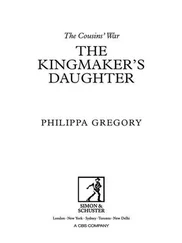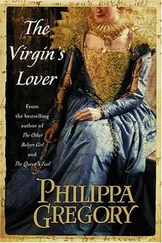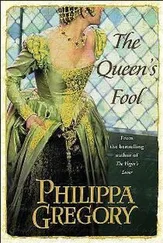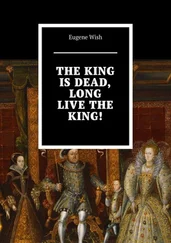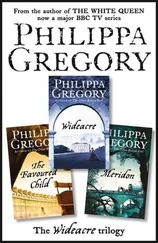17 February 1461
Earl of Warwick defeated at Second Battle of St Albans. Richard and his brother George sent for protection to Philip, Duke of Burgundy
4 March 1461
Edward IV proclaimed king in London
29 March 1461
Yorkists defeat Lancastrians at Battle of Towton
12 June 1461
Richard and his brother George return to England
1 November 1461
Richard created Duke of Gloucester
May 1464
Edward IV marries Elizabeth Woodville
September 1465
Richard resident in household of Earl of Warwick
January 1469
Richard returns to court
June 1469
Warwick’s rebellion starts
26 July 1469
Battle of Edgecote. Henry Tudor’s guardian, William, Lord Herbert, Earl of Pembroke defeated by rebels and subsequently executed
17 October 1469
Richard made Constable of England
12 March 1470
Warwick rebels again. Battle of Losecote Field. Warwick and Clarence flee to France and ally themselves with the Lancastrians
2 October 1470
Warwick invades; collapse of Edward IV’s authority. Richard accompanies Edward Into exile in Burgundy. Readeption (Restoration) of Henry VI
March 1471
Edward IV and Richard return from exile and land in Yorkshire
14 April 1471
Earl of Warwick is defeated at the Battle of Barnet
4 May 1471
Margaret of Anjou and the Lancastrian Prince Edward are defeated at Tewkesbury
21 May 1471
Henry VI is murdered in the Tower of London, almost certainly on Edward IV’s orders
Spring 1472
Richard marries Warwick’s daughter Anne Neville, starts to fight for a share of the Neville inheritance and begins to build up a northern affinity
29 August 1475
Edward IV and Louis XI meet at Picquigny, ending the English invasion of France. Richard shows his displeasure by absenting himself from the agreement
18 February 1478
Richard’s brother, George, Duke of Clarence, convicted of treason and executed in the Tower of London
24 August 1482
Richard Invades Scotland. Berwick recaptured
9 April 1483
Death of Edward IV; succession of Edward V
29–30 April 1483
Richard and Buckingham arrest Rivers, Grey and Vaughan at Northampton and Stony Stratford and secure custody of Edward V
4 May 1483
Richard and Edward V enter London: George Neville, Duke of Bedford dies and Richard loses hereditary right to the Neville lands
10 June 1483
Richard appeals for help from northern supporters against the Woodvilles
13 June 1483
Execution of Lord Hastings and arrest of Morton and Archbishop Rotherham at council meeting
22 June 1483
Richard’s right to the throne proclaimed in a sermon by Ralph Shaw
26 June 1483
Richard becomes king
6 July 1483
Coronation of Richard III
29 August 1483
Richard arrives in York on royal progress
10 October 1483
Rebellion flares up in southern England
2 November 1483
Execution of the Duke of Buckingham at Salisbury
23 January 1484
Richard’s only parliament meets at Westminster
April 1484
Death of Richard’s son, Edward of Middleham
7 December 1484
Richard’s first proclamation against Henry Tudor
16 March 1485
Death of Richard’s queen, Anne Neville
9 June 1485
Richard arrives in Nottingham to await Henry Tudor’s landing
23 June 1485
Richard’s second proclamation against Henry Tudor
7 August 1485
Henry Tudor lands at Milford Haven
22 August 1485
Battle of Bosworth. Richard III killed; Henry Tudor (Henry VII) succeeds him
History of the Church of the Greyfriars, Leicester
1230
House in existence on Greyfriars site
1255
Church of Greyfriars first mentioned
1402
Rebellion: number of greyfriars executed by Henry IV
25 August 1485
King Richard III buried in the choir of the Greyfriars Church
1495
Tomb and epitaph erected over burial by Henry VII
1538
Dissolution of the Monasteries. Greyfriars expelled and priory and church closed. Sold to John Bellowe and John Broxholme to remove roof lead and timbers
1540s
Greyfriars priory and church become ruins. Site sold to Sir Robert Catlyn
(superstructure of King Richard’s tomb removed)
1600
Site sold to Robert Herrick. Mansion house and gardens built
1611
John Speed reports King Richard’s grave lost and his bones dug up at the Dissolution
1612
Christopher Wren records a ‘handsome stone pillar’ marking the site of King Richard’s grave in Herrick’s garden
1711
Herrick’s descendants sell land to Thomas Noble. New Street laid out with houses
1759
Herrick’s mansion house sold to William Bentley
1914
Land and gardens sold to Leicestershire County Council who erect offices around it
1930s–40s
Land and gardens tarmacked to become car parks
1968
Site passes to Leicester City Council, Social Services Department
Looking for Richard project, Leicester
2004–5
Philippa Langley visits car parks. Dr John Ashdown-Hill discovers Richard III’s mtDNA
2007
University of Leicester Archaeological Services (ULAS) digs in nearby Grey Friars Street but uncovers no trace of Greyfriars Church
2008
Ashdown-Hill refutes River Soar story. Annette Carson in Richard III: The Maligned King asserts the king’s grave is probably in the Social Services car park
21 February 2009
Langley and Ashdown-Hill meet. Langley begins Looking for Richard (LFR) project at Cramond Inn, Edinburgh
September 2010
Leicester City Council supports LFR project
January 2011
Langley obtains TV rights to John Ashdown-Hill’s book, Last Days of Richard III
March 2011
Langley commissions ULAS for LFR project
June 2011
Langley receives permission from Leicester City Council for Ground Penetrating Radar Survey and archaeological investigation of Social Services car park
28 August 2011
Langley carries out Ground Penetrating Radar Survey of the three car parks
March 2012
April dig cancelled
July 2012
International Appeal saves dig
25 August 2012
Two-week dig begins. Leg bones discovered beside letter ‘R’
31 August 2012
Langley instructs exhumation of remains found beside letter ‘R’. ULAS applies for licence to exhume up to six sets of remains of persons unknown
3 September 2012
Discovery of Greyfriars Church. Exhumation licence received from Ministry of Justice. Dig extended into third week by Leicester City Council
Читать дальше
